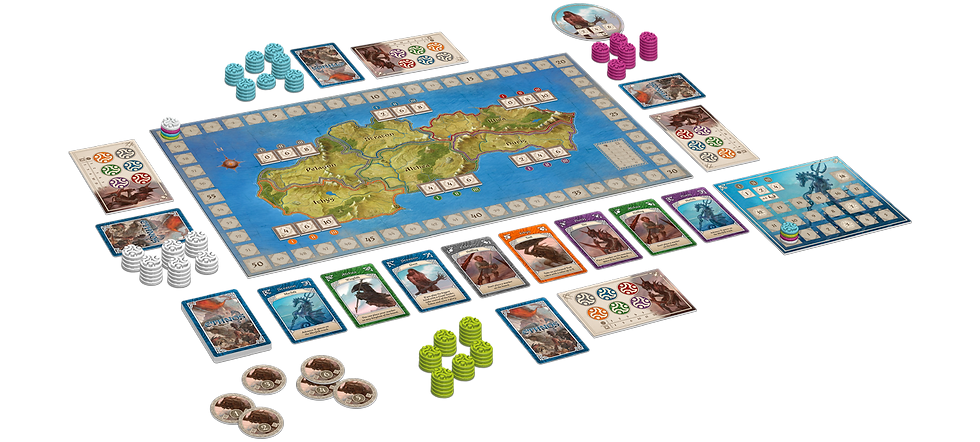Ethnos
- Board's Eye View
- Sep 14, 2017
- 3 min read
Updated: Dec 4, 2019
This is a game that has generated a lot of chatter in the board game ‘community’ (what unkind souls might describe as ‘hype’). Is it justified?
Well, I’ve played Ethnos numerous times with various different numbers of players and pretty much everyone who has played it enjoyed the game, and at least half went out and bought their own copy. Nevertheless, Ethnos is an odd mix: set collection meets area control and with a strong element of ‘push your luck’.

Ethnos comes with sets of cards representing 12 fantasy/mythological species. To set up the game, six of these species are selected at random (five in a 2 or 3 player game), the cards for those species are shuffled and a tableau of cards is laid out on the table equal to twice the number of players). Three ‘dragon’ cards are shuffled into the lower part of the remaining deck. These signal the end of each ‘age’: play in an age ends immediately the third dragon card is drawn. With cards all being formed into sets, you are going to find you need to give them a very thorough shuffle before each ‘age’. This means that if ever there was a game where you probably ought to sleeve the cards, this is it. That isn’t a criticism – just a warning: this is a game that’s likely to get a lot of play so you are going to want to ensure that the cards don’t end up getting damaged or worn.
In addition to the cards, there is a board representing the land of Ethnos. Geography buffs may spot that Ethnos looks suspiciously similar to Slovakia: not a country known for its population of trolls, centaurs, elves and even less likely to accommodate Merfolk, given that Slovakia is entirely landlocked.

The Ethnos/Slovakia map is divided into 6 regions, and chits are randomly laid out in each region showing the ‘glory’ (victory points) each is worth for majority control across the three ‘ages’ of the game

In a player’s turn, they have a simple choice: draw one of the face-up cards (if there are any), draw a face down card from the draw pile, or lay out a ‘band’ (a set of cards either bearing the same species or a mixed band all of the same colour). The size of the band determines the amount it will score at the end of each ‘age’. Players can lay just one card as a band, but it will score nothing. A band of two scores 1 glory, three score 3 glory, four score 6, five score 10, and six or more score 15.
This means there are potentially big scores to be had from holding onto cards to collect large bands. The two downsides to this are the player’s hand limit (10) and the fact, when a band is laid down, any cards in hand not forming part of that band are lost to the player and are placed face up and available for taking in the same way as the cards that were laid face up at the start. As the ‘age’ goes on and the dragon cards start to appear, the fear is that the game might suddenly end before a player’s next turn: players score nothing at all for cards left in their hand at the end of an ‘age’.
Each species has a special power and the power is actioned in respect of the ‘leader’ of the band (the top card). If the band are all of the same species, the player will choose the leader according to colour because, whenever a large enough band is played to the table, the player places one of his tokens in a region of the corresponding colour. They can only add tokens to those they have previously placed out if the size of the band is larger than the number of tokens they already have there. So, for example, a player who already has two tokens in the red region would have to place down a red led band of at least three cards.
Players will want to plan ahead with a view to winning control of the regions bearing the highest glory rewards, and they may agonise over whether or not to push their luck in the hope of getting a large, higher-scoring band. Nevertheless, Ethnos is easy to teach and learn because, in a player’s turn, they are presented with a simple choice of action. For the same reason, this is a game that moves ahead at a brisk pace: it doesn’t take an age to complete an ‘age’ (an ‘age’ may typically take only about 10 minutes) and it’s a game that can be quickly understood and played by people new to board games.

